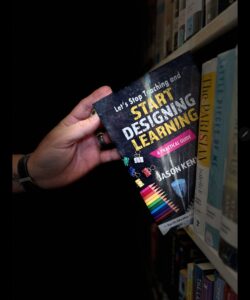Do you want to know what one of my wife’s pet peeves about me is? She says that I, “Watch the same things all the time.” By that, she is referring to the fact that if there is nothing else on, and there happens to be a reliable, staple movie on television, I’ll keep it on that channel. I mean, who would ever get tired of The Shawshank Redemption, Oh Brother! Where Art Thou? or John Wick? But, my rebuttal to this accusation is that SHE is also guilty of the same watching patterns. Even though all the home renovation shows she watches may be in different locations, with different owners and houses, they typically all follow the same pattern: The homeowner has a budget and a wish list. Somewhere along the way a big issue affecting the safety or stability of the home is discovered. Walls and floors get torn out to fix the issue, much to the chagrin of the homeowner who really just wanted some simple, cosmetic things done. Priorities are fixed along with whatever else can be afforded. The end.
Completely predictable and much less entertaining than any of my choices. But, the same problems all these homeowners face are the same ones facing our schools when it comes to learning. We are entering a new school year and trying to determine what our wish list is. Items like student achievement, learning growth, student behavior, staff morale among others top the lists of most places. Our first inclination is to look at these items individually as separate projects to tackle. Then we go into searching for programs, interventions and solutions to spend money on and push out to our staff in order to get our wish list accomplished. But, like the houses on all these renovation shows, what needs to be identified and fixed first are the basics provided in the Tier 1 learning across the school. Until these necessities are corrected first, nothing else matters much. So, what are some of the major components schools can inspect and reflect on to make Tier 1 all it needs to be?
Collective Commitments from the Adults
This one is most likely the most daunting part of the renovation process. It would be like stripping every part of the house down to the stud walls. Essentially, it is the same thing. You, as a school staff, are stripping away everything there is until there is nothing left but a collective supportive framework of ideas. These ideas have to be shored up, stabilized, and set before any other work can continue. The adults in the building have to come together and commit to some essentials. Notice I didn’t say “buy-in.” Buy-in tends to be temporary, feeling-based, adult-centered and not really about the kids and their learning. What is needed is the collective to come together and set the foundational, concrete commitments that can be built upon: Ideals surrounding Teacher/Learner Relationships, Learning Essentials, Effective Designs and other elements that evidence clearly shows impacts our learners and their learning. Once these are set, it is then up to the adult body in the building to commit to these on a daily basis. These are promises that, no matter what, we will do for our learners and their learning every single day without alibis or excuses. It takes this type of collective commitment to get the real work done in our schools.
Belief in the Learners
Water damage and mold are two common culprits often hiding in a lot of the floors and walls of those reno shows. The decay that seems to hide in our school building centers on the belief we have in the learners coming to us. This time of year, class lists are coming out and teachers are checking them out. Many are also sharing opinions of kids to the assigned teachers of the new school year. Unless it is a medical necessity or safety issue of some kind, I never wanted to know anything about my kids coming to me. I wanted to discover them by getting to know them without any preconceived notions. Some of the labels placed on kids can have similar effects. IEP, RTI, Tier 2 and 3, EBD, Giften, EL, an address, a family name, a sibling, and countless other qualities can cloud our perception of the learners coming to us. Like I have said over and over again, we teach learners, not labels. This requires our belief in them. We need to believe in them rather than pass judgment over them. Believe in ever single kids’ ability to learn and want to learn.
Instruction Designed for Learning
The final area to inspect and reinforce is the Tier 1 learning we are providing for all students. After we commit to the process and principles, after we decide to believe in kids, we have to design learning for them that provides high quality learning and produces visible evidence for all. This means making sure we use a design framework for learning that incorporates all the high-impact practices that work best. The research is out there. We know the science behind learning and what causes it to happen in the classroom. We must start using it. We cannot keep on “doing what we’ve always done,” expecting to get different results. We also cannot keep on adding more programs, interventions and initiatives or spend more money on things that will not have the impact that a solid, Tier 1 will. Measures like these are superficial and are a temporary attempt at fixing a problem. But fixing a foundational problem by superficial means never works. We have to peel it all away, discover what is not working and what is, and make the necessary repairs. Fixing Tier 1 so that it provides learning for all learners, consistently and continuously, is the only way to get this renovation completed.
There’s no better time to complete a renovation than the summer. We have some time to take a better look at our actions, attitudes, practices and pedagogy to determine if anything needs to be addressed. We can’t keep slapping on a new coat of pain, replace outdated fixtures or renew some flooring. We have to get things stripped down to the foundation and the studs to discover what is needed to be fixed. It’s time to roll up our sleeves, grab a sledgehammer and get to work.


